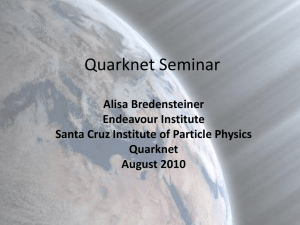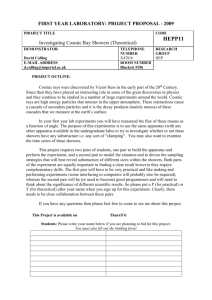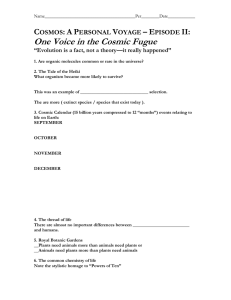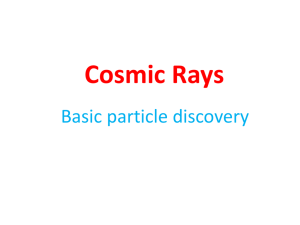SLAC Online Cosmic Ray Activity High Energy Cosmic Rays Name
advertisement
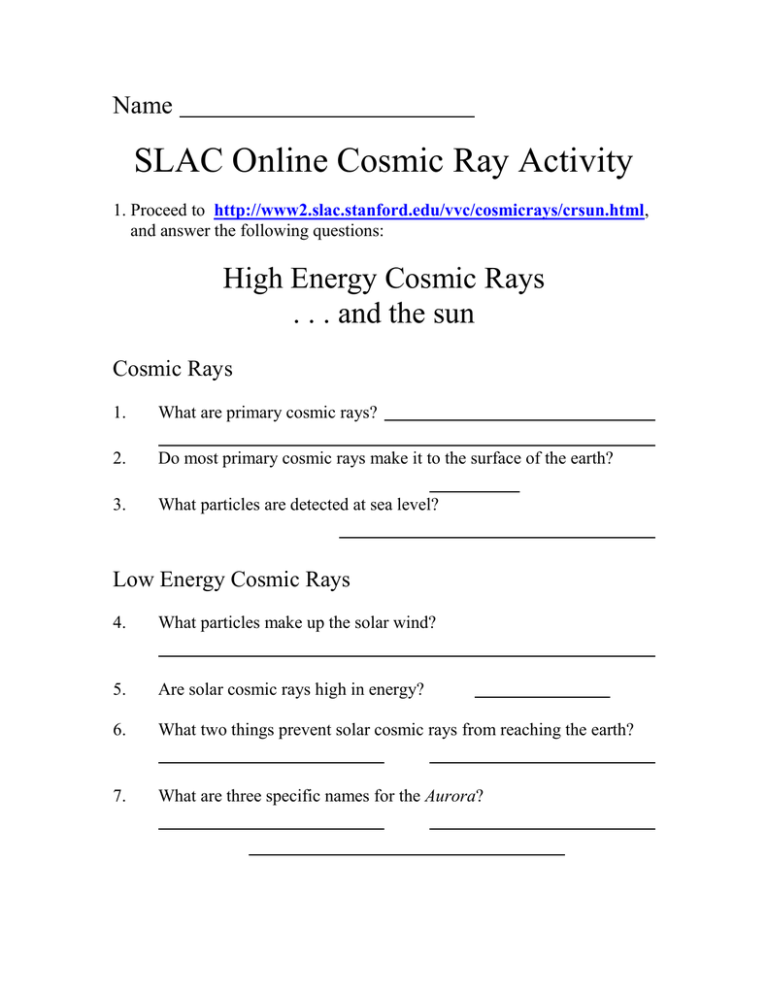
Name SLAC Online Cosmic Ray Activity 1. Proceed to http://www2.slac.stanford.edu/vvc/cosmicrays/crsun.html, and answer the following questions: High Energy Cosmic Rays . . . and the sun Cosmic Rays 1. What are primary cosmic rays? 2. Do most primary cosmic rays make it to the surface of the earth? 3. What particles are detected at sea level? Low Energy Cosmic Rays 4. What particles make up the solar wind? 5. Are solar cosmic rays high in energy? 6. What two things prevent solar cosmic rays from reaching the earth? 7. What are three specific names for the Aurora? High Energy Cosmic Rays 8. What is the heliosphere, and how far does it extend? 9. What effect does the heliosphere have on the energy of GCR’s? 10. How does this affect the rate at which GCR’s reach the earth? 11. How many years are in the activity cycle of the sun? 12. What are three changes related to the sun that occur during a solar maximum? 13. Are sunspots cool or hot? 14. When did scientists begin making cosmic ray measurements? 15. What is the typical change in cosmic ray flux during a solar maximum? To learn about a possible source of cosmic rays, return to the top left of the page and click on: High Energy Cosmic Rays . . . and supernovae 1. What are the typical energies of high energy cosmic rays? 2. Cosmic rays are made of primarily what particle? Supernovae 3. What occurred in the center of the central ring in the picture taken by the Hubble Space Telescope? 4. What is thought to be the source of the two red rings in the picture? 5. Is this interaction thought to be a possible source of cosmic ray protons? To learn about how cosmic ray protons produce muon showers on earth, go to the top left of the page and click on: High Energy Cosmic Rays . . . and the atmosphere 1. What do cosmic ray protons collide with when they enter the earth’s atmosphere? Showers and muons 2. What three particles are produced when a high-energy pion decays? 3. What two properties of muons enable them to reach the earth’s surface? 4. Do muons interact strongly? 5. Why aren’t muons deflected significantly by atomic electric fields? 6. What happens to most muons produced in the atmosphere? 7. If we took our muon detector up in an airplane, would we observe higher or lower rates than at MHS? 8. At sea level, approximately how often would a muon pass through an area the size of a fingernail? Muons are Heavy Electrons 9. Approximately how many times more massive is the muon than the electron? 10. What three specific particles does a muon decay into? 11. What is the antiparticle of the electron called? 12. Which are produced in greater rates by cosmic rays, muons, or antimuons? 13. What is the charge on: a muon? an antimuon? Half-life and relativity 14. What is the half-life of a muon? 15. Roughly how fast do muons produced in the atmosphere travel? 16. What effect does this speed have on the apparent half-life of muons?
